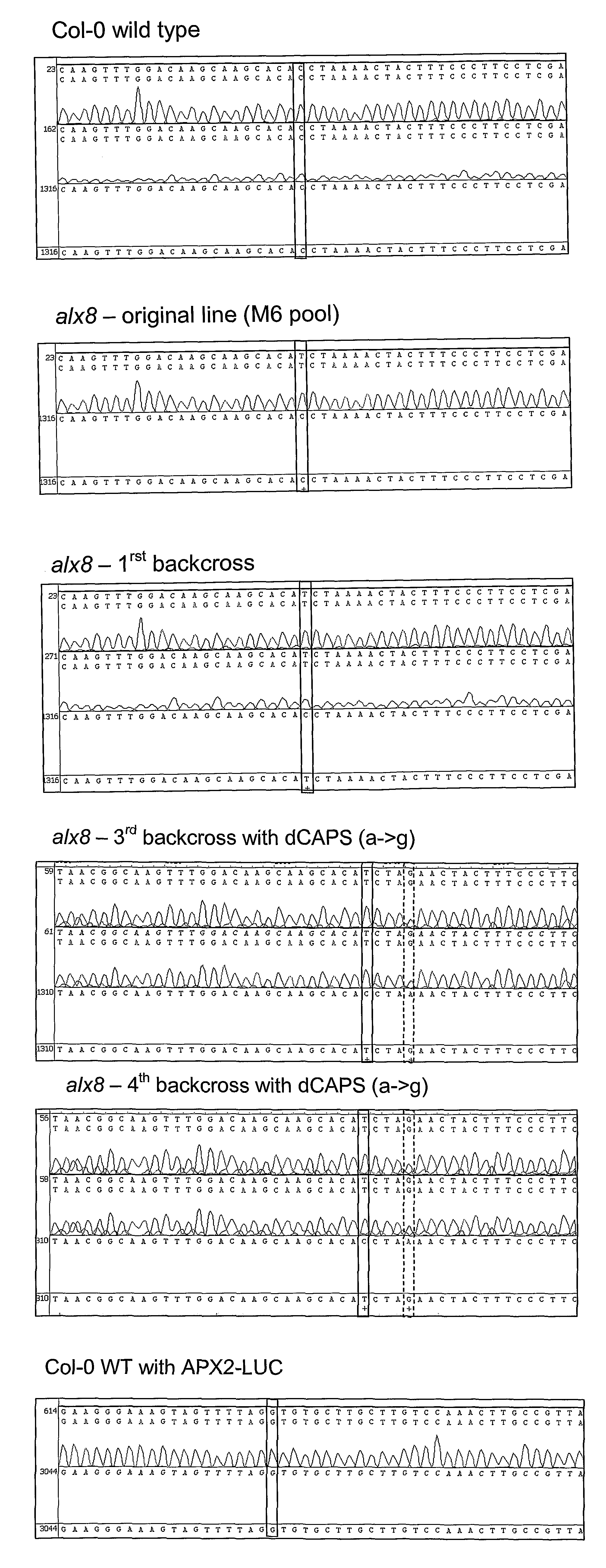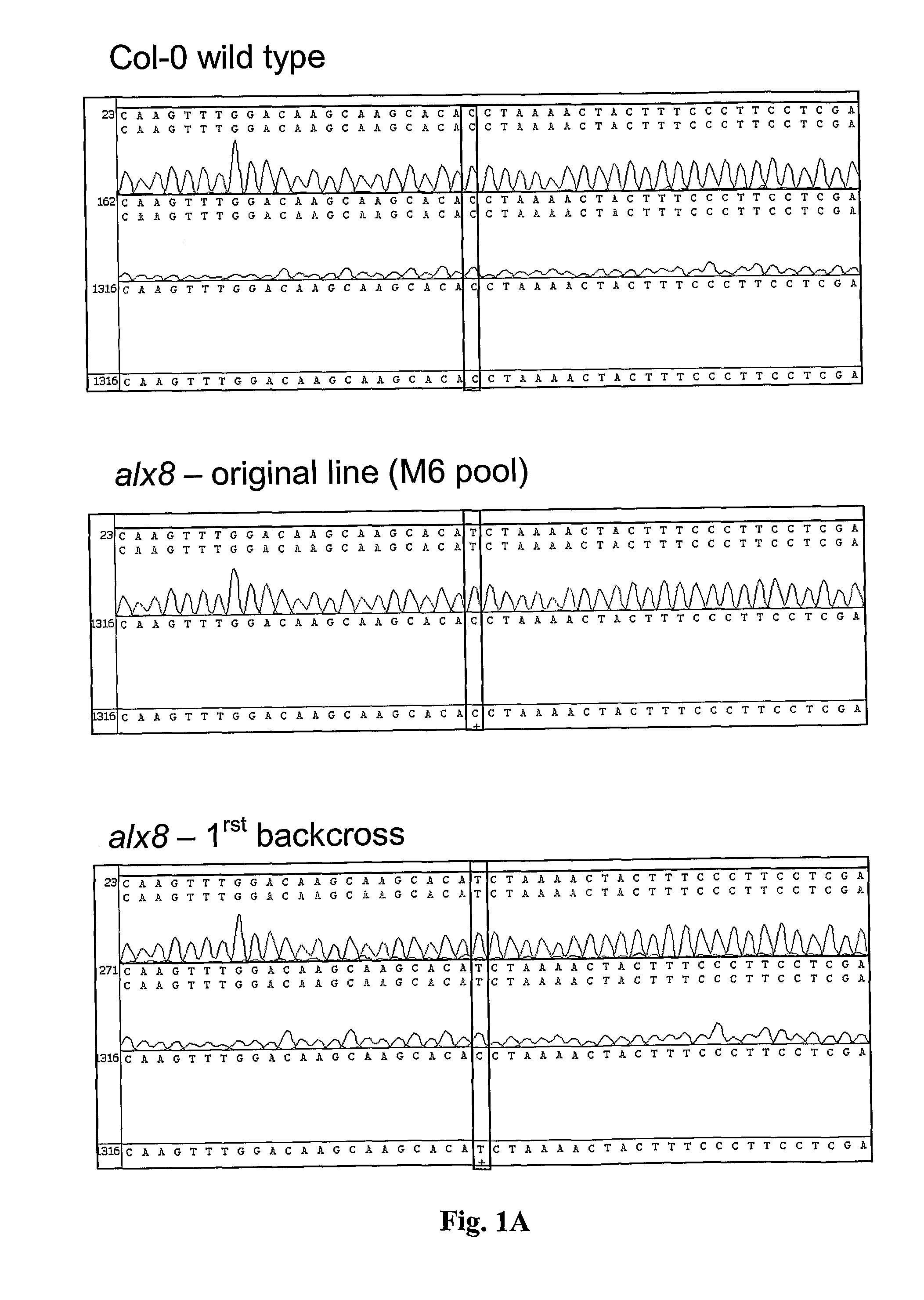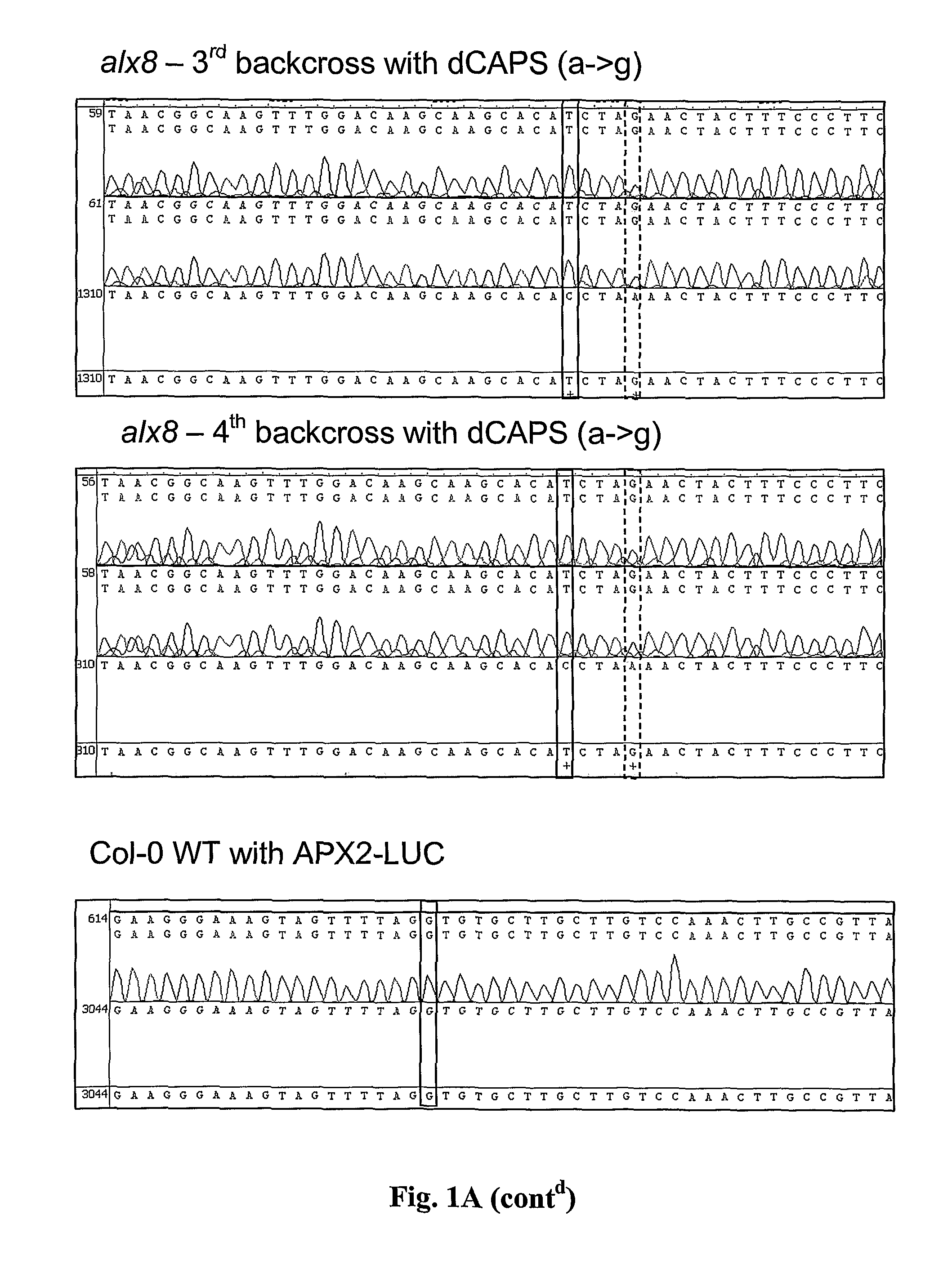Method for improving stress resistance in plants and materials therefor
a stress resistance and plant technology, applied in the field of stress resistance in plants, can solve the problems of heat stress and the limitations of existing methods for improving the stress resistance of plants, and achieve the effect of increasing the stress resistance of mutant plants and reducing or no activity associated
- Summary
- Abstract
- Description
- Claims
- Application Information
AI Technical Summary
Benefits of technology
Problems solved by technology
Method used
Image
Examples
example 1
Materials and Methods
Plants and Growth Conditions
[0136]Arabidopsis seed already transformed with the APX2 promoter-luciferase reporter gene
[0137](APX2:LUC) construct (Karpinski, S. et al (1999), Science 284: 654-657) was mutagenised with ethylmethane sulfonate (EMS) and M2 plants screened in pools derived from 500 M1 parents (see Ball, L. et al (2004), Plant Cell 16: 2448-2462). The mutant screen was carried out using a luminescence counter to count photons emitted per seedling in 96-well microtitre plates as described in Rossel, J. B. et al (2004), Methods in Molecular Biology 274: 287-300. To confirm the reproducibility of the altered APX2 expression, four-week old Arabidopsis plants containing APX2:LUC were imaged using a cooled CCD camera (Model DV 435, Andor Technology, Tokyo, Japan). Prior to imaging, the plants were sprayed with a 1 mM D-luciferin (BIOSYNTH, Staad, Switzerland) solution containing a few drops of Tween 80 and left in growth light conditions for 5 min. Images o...
example 2
Results
[0257]After EMS mutation of Arabidopsis thaliana seeds, several mutants with altered APX2:LUC expression were identified, including mutant alx8 which had increased APX2:LUC expression. These plants showed increased drought tolerance—after 9 days of withholding water, the leaves of the alx8 mutant remained turgid, green and viable whereas wild-type leaves had wilted and died (see FIG. 7). ABA levels have been found to be higher in alx8, although at the same time, components in both the ABA-dependent and ABA-independent pathways are up regulated ((Rossel, J. B., P. B. Walter, et al. (2006), Plant, Cell and Environment 29(2): 269-281). For instance the high light response genes, ZAT10 and APX2, are both up-regulated in alx8. However, ZAT10 is considered to be in the ABA-independent pathway (Zhang, J. Z., et al (2004), “From Laboratory to Field. Using Information from Arabidopsis to Engineer Salt, Cold, and Drought Tolerance in Crops”, Plant Physiol. 135(2): 615-621), while APX2 ...
PUM
| Property | Measurement | Unit |
|---|---|---|
| Temperature | aaaaa | aaaaa |
| Time | aaaaa | aaaaa |
| Salinity | aaaaa | aaaaa |
Abstract
Description
Claims
Application Information
 Login to View More
Login to View More - R&D
- Intellectual Property
- Life Sciences
- Materials
- Tech Scout
- Unparalleled Data Quality
- Higher Quality Content
- 60% Fewer Hallucinations
Browse by: Latest US Patents, China's latest patents, Technical Efficacy Thesaurus, Application Domain, Technology Topic, Popular Technical Reports.
© 2025 PatSnap. All rights reserved.Legal|Privacy policy|Modern Slavery Act Transparency Statement|Sitemap|About US| Contact US: help@patsnap.com



